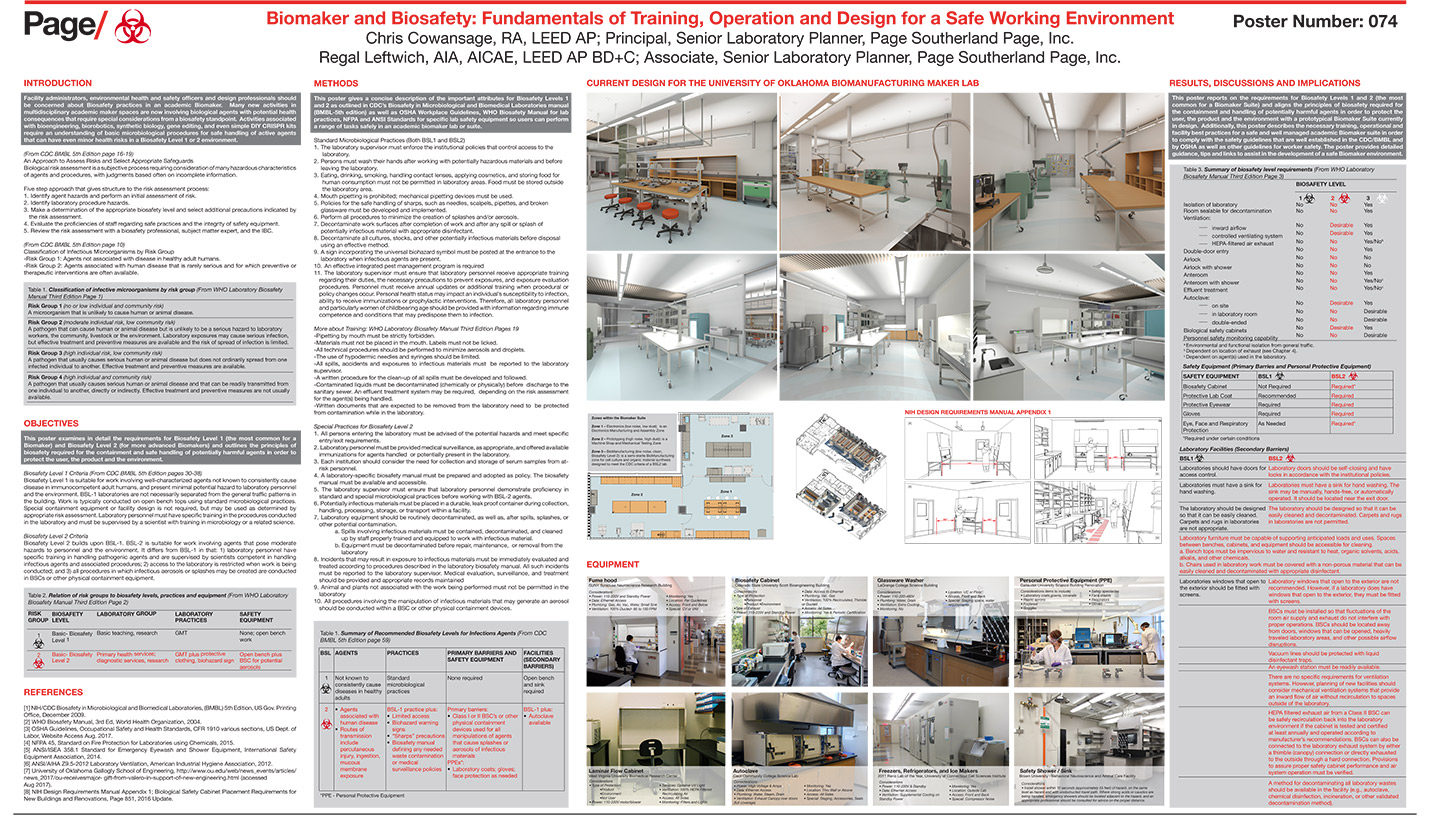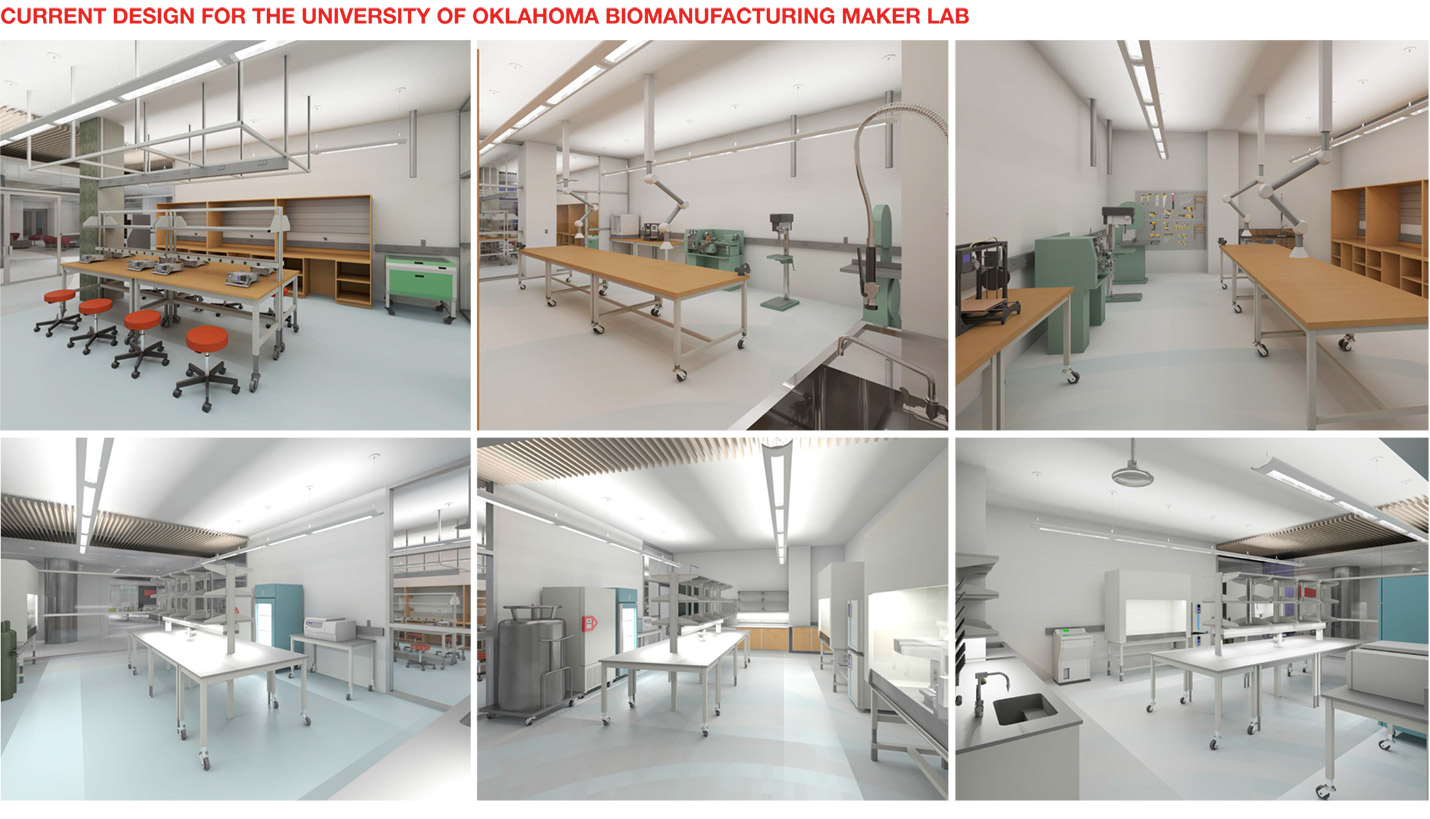Biomaker and Biosafety: Fundamentals for a Safe Working Environment
A current trend in higher education is the incorporation of “biomaking” as an activity into their maker spaces. “Biomaking,” also referred to as “biohacking,” enables beginners to engage with biology and life science practices traditionally reserved for highly trained researchers, such as synthetic biology and genetic engineering. There are many safety concerns associated with this specialized type of work that are not commonly planned for in typical makerspaces. Page Principal Chris Cowansage and Page Associate Regal Leftwich created an elaborate presentation on this topic for the annual 2017 International Symposium on Academic Makerspaces (ISAM) in Cleveland, OH.
The maker movement and the associated network of tool shops, design studios and project spaces need to be understood to be designed effectively, safely and environmentally sustainable. Regal and his colleagues have been sharing their expertise in the fundamentals of maker spaces, maker communities and best practices for planning and equipping maker spaces of all sizes for a range of academic settings.
The poster that Page created was designed to help facility administrators, environmental health and safety officers, faculty and design professionals understand regulatory and procedural requirements and includes a case study of Page’s biomanufacturing lab suite currently under construction at the University of Oklahoma. The New School of Biomedical Engineering will integrate engineering and medicine and further develop biomedical imaging, nanomedicine and neuroengineering as a part of OU’s College of Engineering.
Both Chris and Regal assembled and formatted lab planning codes, guidelines, and best practices associated with biosafety labs. They also made a similar, subsequent AIA-accredited presentation to the Virginia chapter of APPA at George Mason University earlier this year.
11/20/2017











